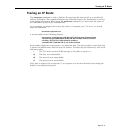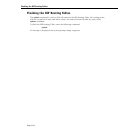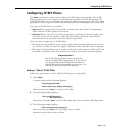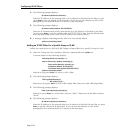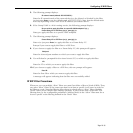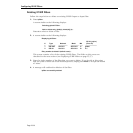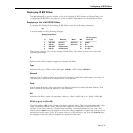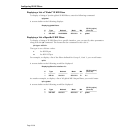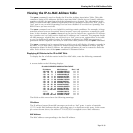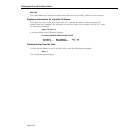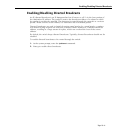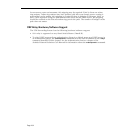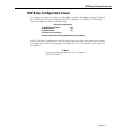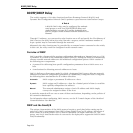
Viewing the IP-to-MAC Address Table
Page 25-39
Viewing the IP-to-MAC Address Table
The ipmac command is used to display the IP-to-Mac Address Association Table. This table
contains a listing of IP addresses and their associated MAC (Media Access Control) addresses
together with the slot/port from which the information was learned. The information in this
table is learned from ARP (Address Resolution Protocol) messages received on “leaf” ports. A
“leaf” port is one on which Spanning Tree has been disabled or on which no Spanning Tree
BPDUs have yet been received.
The
ipmac command can be very helpful in resolving certain problems. For example, in large
networks where hosts are frequently moved around, users can experience connectivity prob-
lems. In this situation, the ipmac command can be used to help locate a particular IP worksta-
tion. Another use is to help resolve duplicate IP addresses on a network. The program checks
all ARP messages, whether they are received on a “leaf” port or not, against those in its table
to see if a duplicate IP address exists. If a duplicate is detected, an SNMP trap message is
generated and the duplicate can easily be seen in the table produced by the ipmac command.
The
ipmac command can be entered alone in which case it will display all entries currently in
the table, or you may enter a specific IP address along with the command to show only the
information related to that IP address. An optional parameter (-f) can be entered to flush the
table. Each of these uses of the ipmac command is illustrated below.
Displaying All Entries in the IP-to-MAC Table
To display the list of all the entries in the IP-to-MAC table, enter the following command:
ipmac
A screen similar to the following displays:
IP to MAC ADDRESS ASSOCIATION TABLE
IP Address MAC Address Slot / Intf
192. 168. 10. 1 0020DA:6DE610 4 / 5
172. 16. 0. 5 0020DA:76D3D0 3 / 2
172. 16. 0. 7 00E029:00D41E 3 / 2
172. 16. 0. 41 0000C0:24FFEC 3 / 2
172. 16. 0. 47 00A0C9:0AA907 3 / 2
172. 16. 0. 28 0020DA:7AE9D3 3 / 2
172. 16. 0. 45 080020:8AE301 3 / 2
172. 16. 0. 60 0020DA:73C3A0 3 / 2
172. 16. 30. 00 0020AF:04BA57 3 / 2
172. 16. 41. 03 0000C0:AD8EE9 3 / 2
172. 16. 50. 12 080020:7B79E1 3 / 2
172. 16. 255.254 0020DA:6F97E5 3 / 2
******* 0020DA:032273 5 / 1
192. 168. 10. 1 0020DA:7AEA60 3 / 2
198. 206. 182.222 0020DA:7F48A0 3 / 2
The fields on this screen have the following meanings:
IP Address
The IP address learned from ARP messages received on “leaf” ports. A series of asterisks
(*******) in this field indicates that the preceding entry is a duplicate to this entry. In the exam-
ple screen shown above, the address 172.16.255.254 is assigned to two MAC addresses.
MAC Address
The MAC address corresponding to the listed IP address.



